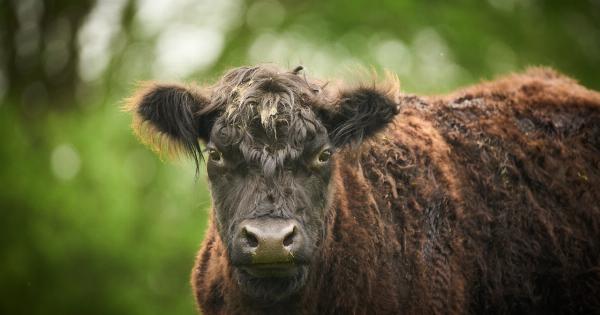Mad Cow Disease, also known as Bovine Spongiform Encephalopathy (BSE), was a major public health concern in the late 1990s and early 2000s.
The disease was linked to the consumption of contaminated beef, which led to a ban on the import of British beef to many countries around the world. While the disease has largely been eradicated in the UK, concerns have recently been raised that it could be making a comeback.
In this article, we will examine the current state of Mad Cow Disease and determine whether or not it is a threat to public health once again.
What is Mad Cow Disease?
Mad Cow Disease is a degenerative neurological disorder that affects cattle. The disease is caused by a prion, which is an abnormal protein that can cause other proteins in the brain to fold abnormally.
This leads to the formation of small holes in the brain tissue, giving it a spongy texture. Symptoms of the disease include changes in behavior, loss of coordination, and eventually, death.
How is it Spread?
Mad Cow Disease is primarily spread through the consumption of contaminated beef. Cattle that have been infected with the disease can appear healthy for many years before showing symptoms, which means they can enter the food chain undetected.
When infected cattle are slaughtered and their meat is processed into beef, the prions can be spread to other animals through contaminated feed. This was the primary reason for the spread of Mad Cow Disease in the UK in the 1990s, as cattle were often fed ground-up animal remains as a cheap source of protein.
Is Mad Cow Disease Still a Threat?
The good news is that the incidence of Mad Cow Disease in the UK has dramatically decreased over the past two decades. In 1992, there were over 37,000 cases of the disease in the UK. Today, there are only a handful of cases each year.
This is largely due to the strict regulations that have been put in place to prevent the spread of the disease. For example, cattle feed is no longer allowed to contain animal remains, and any animal that shows symptoms of the disease is immediately culled to prevent the spread of the disease.
What are the Risks of Mad Cow Disease?
While the risk of Mad Cow Disease to the general public in the UK is very low, there are still concerns that the disease could be making a comeback. One of the biggest risks is the importation of contaminated beef from other countries.
In recent years, there have been a number of cases of Mad Cow Disease in other countries, including France, Spain, and Canada. While the risk of infection from eating contaminated beef is still very low, it is a concern for public health officials.
What is Being Done to Prevent a Re-Emergence of Mad Cow Disease?
In response to the potential risks of Mad Cow Disease, the UK government has implemented a number of measures to prevent a re-emergence of the disease. These include:.
- Prohibiting the feeding of animal remains to any animals
- Raising awareness among farmers and livestock producers about the dangers of the disease
- Implementing strict testing procedures for all cattle that are to be slaughtered for human consumption
- Enforcing strict controls on the importation of beef and other animal products from countries that have had outbreaks of Mad Cow Disease
Conclusion
While the risk of Mad Cow Disease to the general public in the UK is very low, there are still concerns that the disease could be making a comeback.
However, by implementing strict controls on the importation of beef and other animal products, and by enforcing strict testing procedures for all cattle that are to be slaughtered for human consumption, the UK government is taking steps to prevent a re-emergence of the disease. With continued vigilance and monitoring, we can hope to keep Mad Cow Disease at bay and ensure the safety of our food supply.































